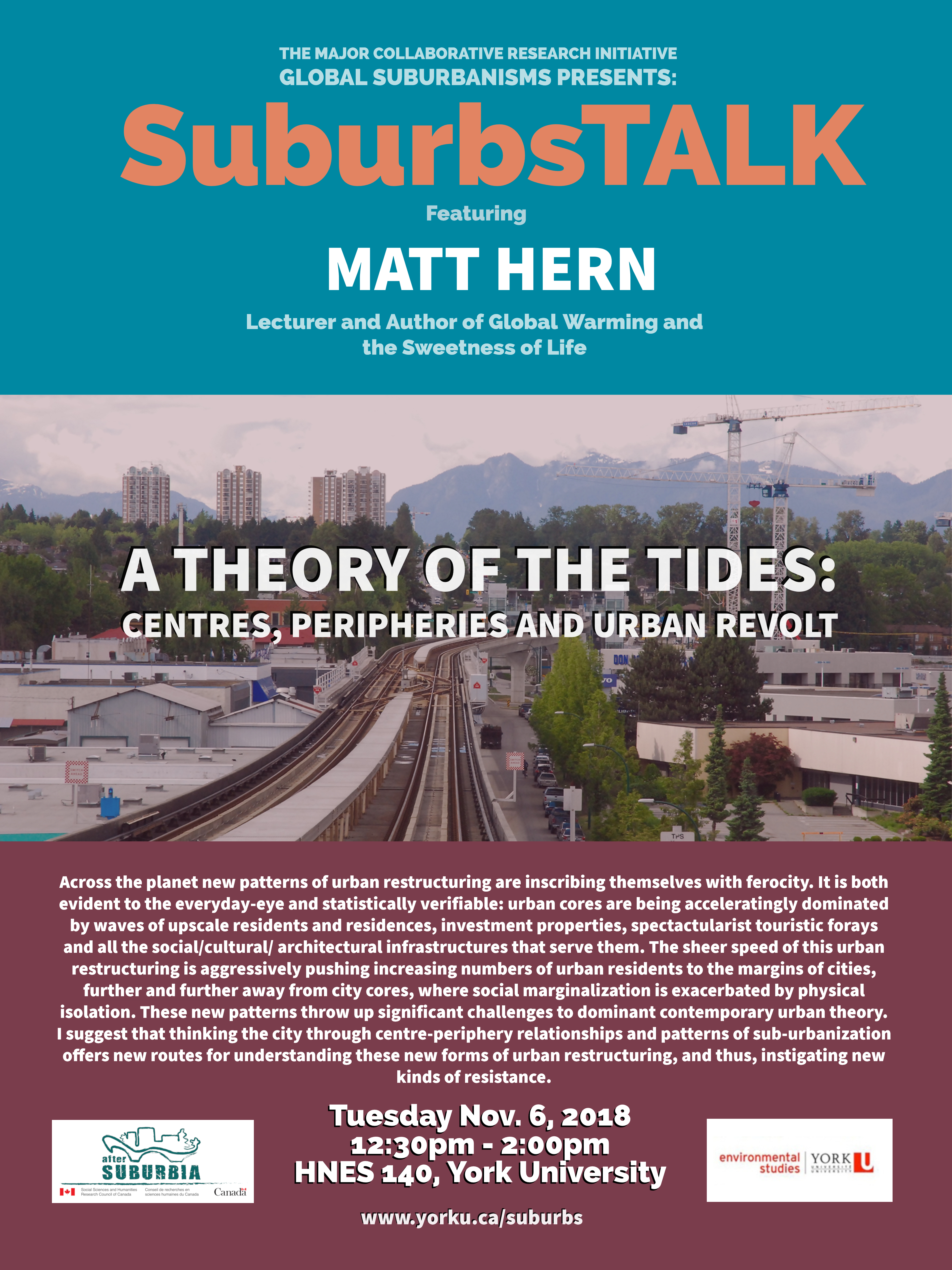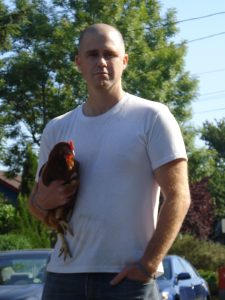
Date: Tuesday November 6, 12:30pm-2:00pm
Location: Room 140, Health, Nursing & Environmental Studies Building
Across the planet new patterns of urban restructuring are inscribing themselves with ferocity. It is both evident to the everyday-eye and statistically verifiable: urban cores are being acceleratingly dominated by waves of upscale residents and residences, investment properties, spectactularist touristic forays and all the social/cultural/ architectural infrastructures that serve them. The sheer speed of this urban restructuring is aggressively pushing increasing numbers of urban residents to the margins of cities, further and further away from city cores, where social marginalization is exacerbated by physical isolation. These new patterns throw up significant challenges to dominant contemporary urban theory. I suggest that thinking the city through centre-periphery relationships and patterns of sub-urbanization offers new routes for understanding these new forms of urban restructuring, and thus, instigating new kinds of resistance.
 Matt Hern lives and works in East Vancouver on səlil'wətaʔɬ (Tsleil-Waututh), Skwxwú7mesh (Squamish), and xʷməθkʷəy̓əm (Musqueam) territory with his partner and daughters. He co-directs Solid State Industries, and continues to lecture globally. Matt's books and articles have been published on all six continents and translated into thirteen languages. His most recent books are What a City is For: Remaking the Politics of Displacement (MIT Press, 2016) and Global Warming and the Sweetness of Life (MIT, 2018, with Am Johal and Joe Sacco).
Matt Hern lives and works in East Vancouver on səlil'wətaʔɬ (Tsleil-Waututh), Skwxwú7mesh (Squamish), and xʷməθkʷəy̓əm (Musqueam) territory with his partner and daughters. He co-directs Solid State Industries, and continues to lecture globally. Matt's books and articles have been published on all six continents and translated into thirteen languages. His most recent books are What a City is For: Remaking the Politics of Displacement (MIT Press, 2016) and Global Warming and the Sweetness of Life (MIT, 2018, with Am Johal and Joe Sacco).

